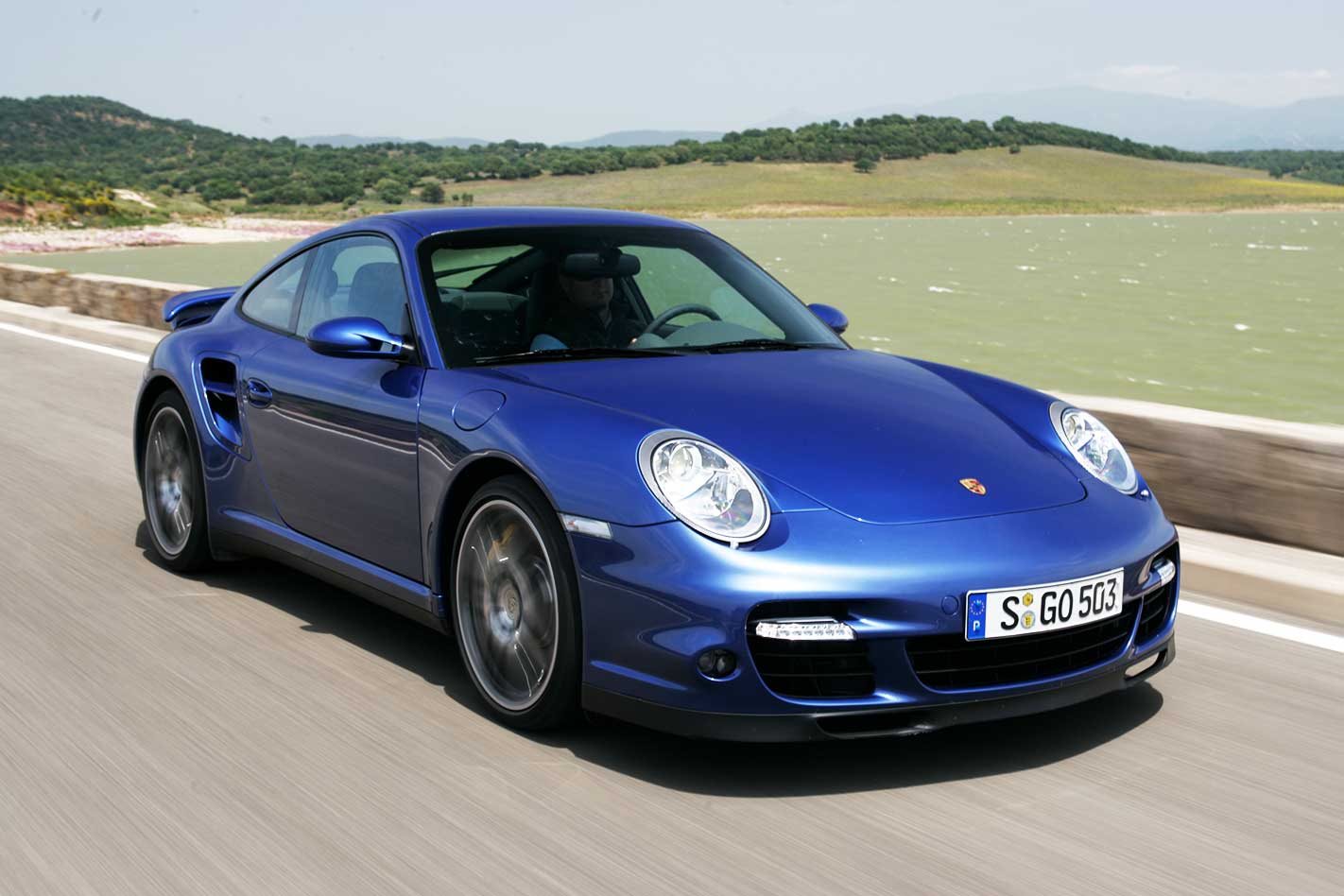Shy and retiring? Hardly. It’s an interesting diversion from the norm for Porsche; this iteration of the Turbo has real presence, reeks of intent… it’s got balls, basically. From the tarmac-hugging front valance, extendable split rear wing and the tricky-dicky LED parking lamps to its swollen flanks and gaping vents, subtle the 997/911 Turbo is not.
This review was originally published in MOTOR’s July 2006 issue
The Turbo’s never been supposed to look like Stuttgart’s gun for hire. That sort of hard bastard-meets-junkyard dog vibe is left to the likes of the GT3 and the GT2. Subtle, restrained styling with design nuances that only the knowledgeable will catch has been the hallmark of the 911 for the more discerning. It’s a model that appeals to the top end of Porsche’s customer barometer.
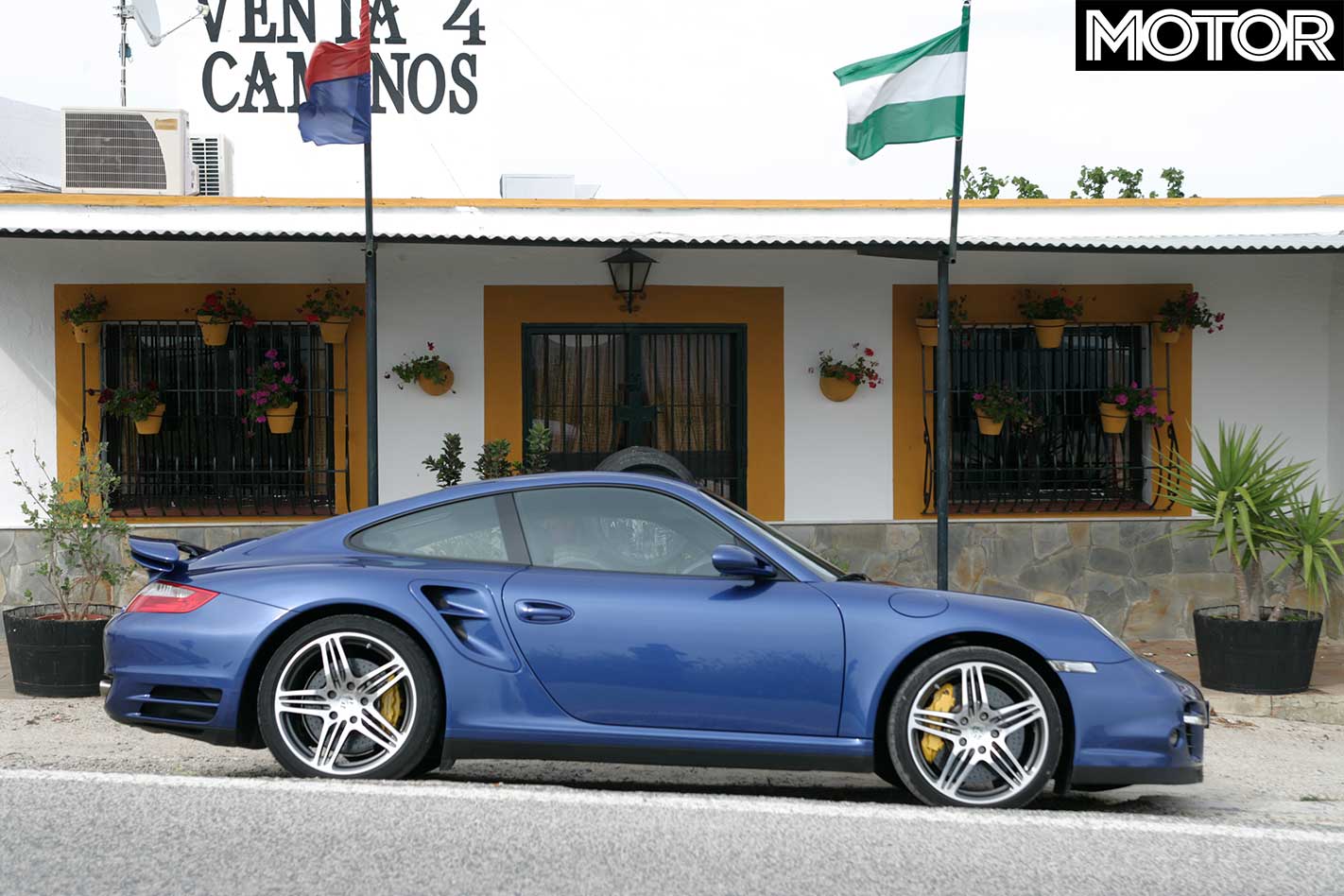
Based on the Carrera 4’s bodyshell, the Turbo’s life force is its venerable 3.6-litre flat six. Starting life in the 993, the engine’s roots can be traced back to the GT1, and it still powers Porsche’s current crop of Carrera Cup race cars.
It’s not the engine that’s of most interest, though – it’s the pair of very clever turbochargers that lurk deep in the tail of the beast. Positioned on the exhaust side of the turbo is a turbine wheel that’s fitted with guide blades that adjust according to the volume of exhaust gas flow.

What’s in it for us? Turbocharging is about compromises. A bigger turbine with a larger air flow capacity makes great top-end power, but doesn’t work well at lower engine speeds; say hello to our old friend lag. A smaller diameter huffer overcomes this trait, but gives away big power.
Variable turbine geometry essentially provides the best of both worlds, with the blades – which can react in as little as 100 milliseconds – restricting the gas flow at low engine speeds to build boost more quickly, and opening up when gas velocities increase with revs.
It’s not new technology, but Porsche has managed to solve the system’s biggest bugbear in petrol engines, heat, by making the vanes from an ‘aerospace material’ that they weren’t really keen to talk about. The turbo’s bearing houses are both water- and oil-coiled, too, with heat exchangers mounted forward of the front wheels.
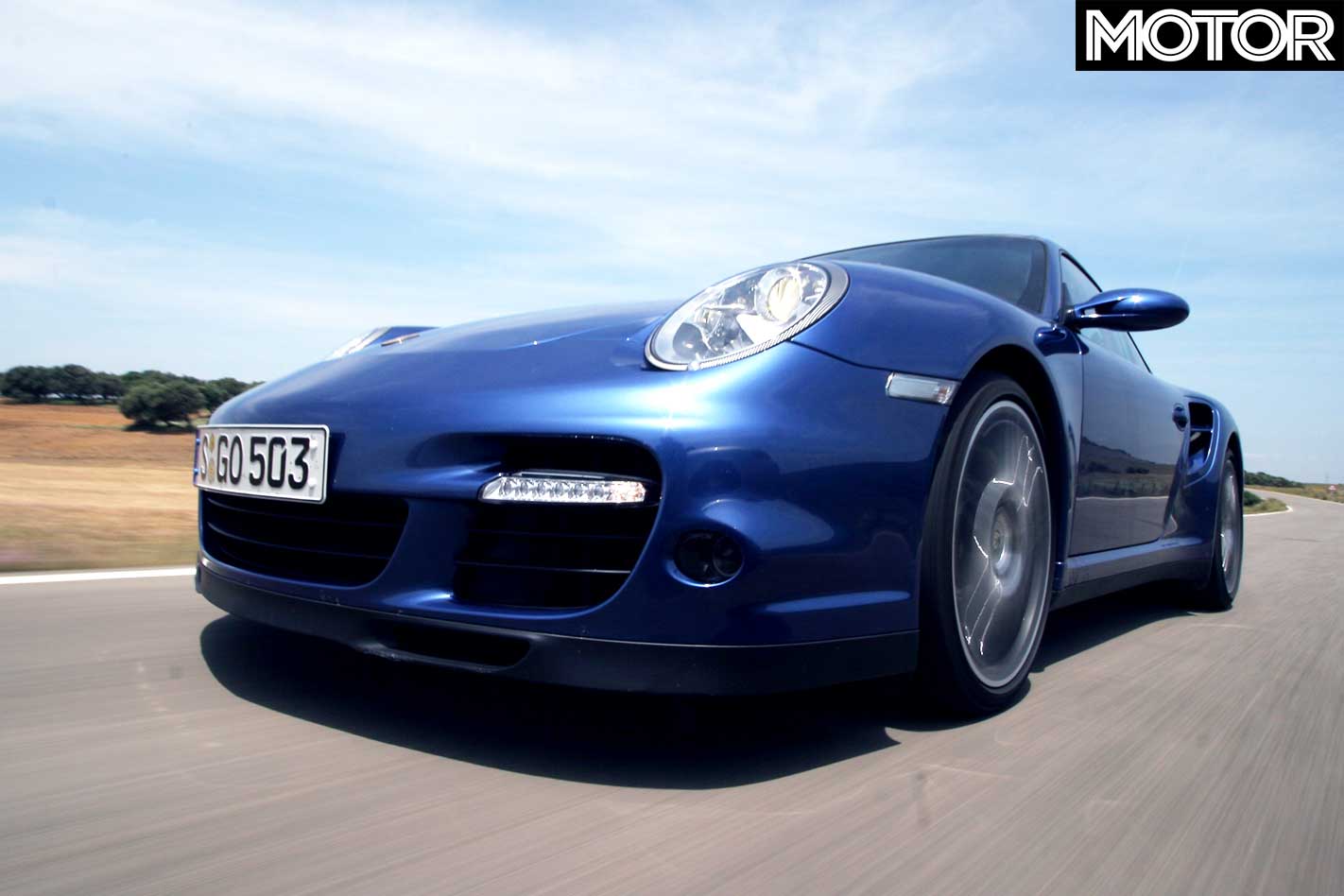
Built on the same eight-bearing alloy block as the previous model Turbo, compression’s been lowered a nick to 9.0:1, while the company’s VarioCam Plus system is responsible for regulating the stuff that goes bang. Controlling both valve lift and opening durations, it’s given the engine a bit more flexibility, particularly in the upper rev range.
There’s a new intake manifold that’s saved three kilos, there’s a dry sump lubrication setup – powered by no less than nine pumps pushing 11 litres of Mobil One around the system – with the oil tank mounted on the front of the engine for better weight distribution.
So what’s the end result of all this gobbledegook? How does 353kW at 6000rpm, or nearly 500 horsepower, grab you? The really impressive number, though, is the torque figure; all 620Nm of it, coming on strong at about 2000rpm and peaking at 5000rpm. And if you opt for the Sport Chrono Pack, there’s a little something extra for those playing along at home.

Punch the Sport button and you’re entitled to Overboost, a function of engine management that gives you an additional 0.2 BAR of huff and puff at full noise on top of the 1.0 BAR you already have, equating to another 60Nm for a period of up to ten seconds. Just what you’ve always wanted, right? A 500 horsepower car with a go-faster button.
Backing the mighty motor is a beefed-up version of the 996 Turbo’s transmission. Triple-cone syncromesh on the first two gears complements double-cone syncros through the rest of the range, while carbon facings on gears three through six reduce shift effort through the ’box. The throw is shorter, the ’box is sweeter, and the clutch is easy to actuate, if a little dull; blame hydraulic boosting for that.
There’s a Tiptronic version, too. All right, that’s enough down the back! Here’s the scary part, though; the Tip S ’box helps the Turbo to a claimed 0-100km/h time of 3.7 seconds. The manual car will ‘only’ do it in 3.9 seconds. It just ain’t right… it’s a significantly different proposition to the standard Tip, though, with vastly improved shift times – especially with the Sport button depressed – and a positive, predictable manual-esque operation.
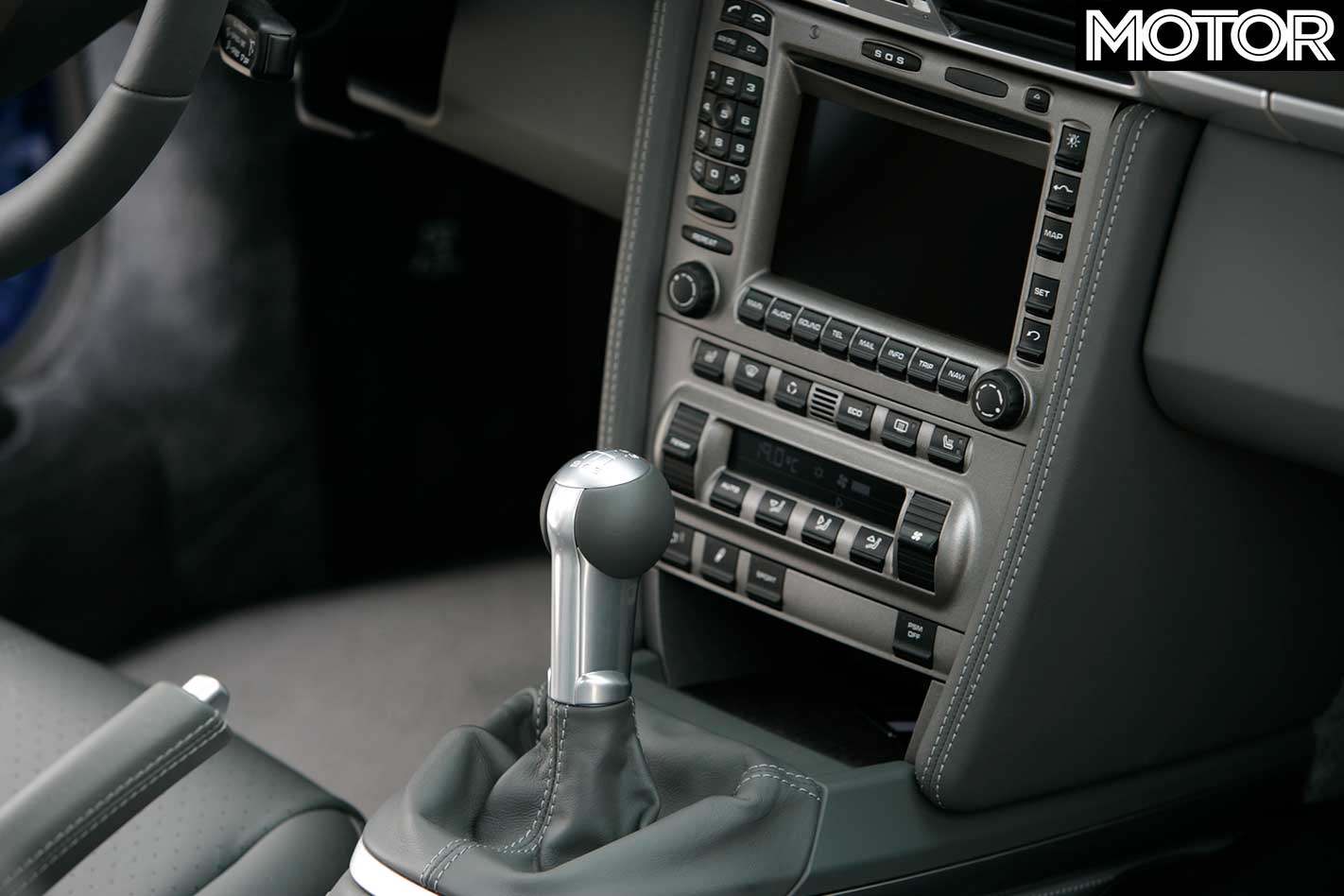
The buttons are no more intuitive to use than normal, however, and inadvertently shifting up a gear when turning the wheel past 45 degrees by bumping the trigger with a thumb happened more than once. Through a middling quick left, it’s not fun.
Obviously, all this grunt is no good if you’re off in the weeds at every corner. The Turbo’s all-wheel-drive chassis has its roots in that most polarising of Porsches, the Cayenne, pinching its trick electromagnetically-actuated multi-plate clutch setup.
Both PTM (Porsche Traction Management) and PASM (Porsche Active Shock Management) decide between themselves about the best way to deal with any particular situation they find themselves in, and instruct the clutch accordingly. It’ll act faster than the driver, in most cases, to retrieve a sticky situation.
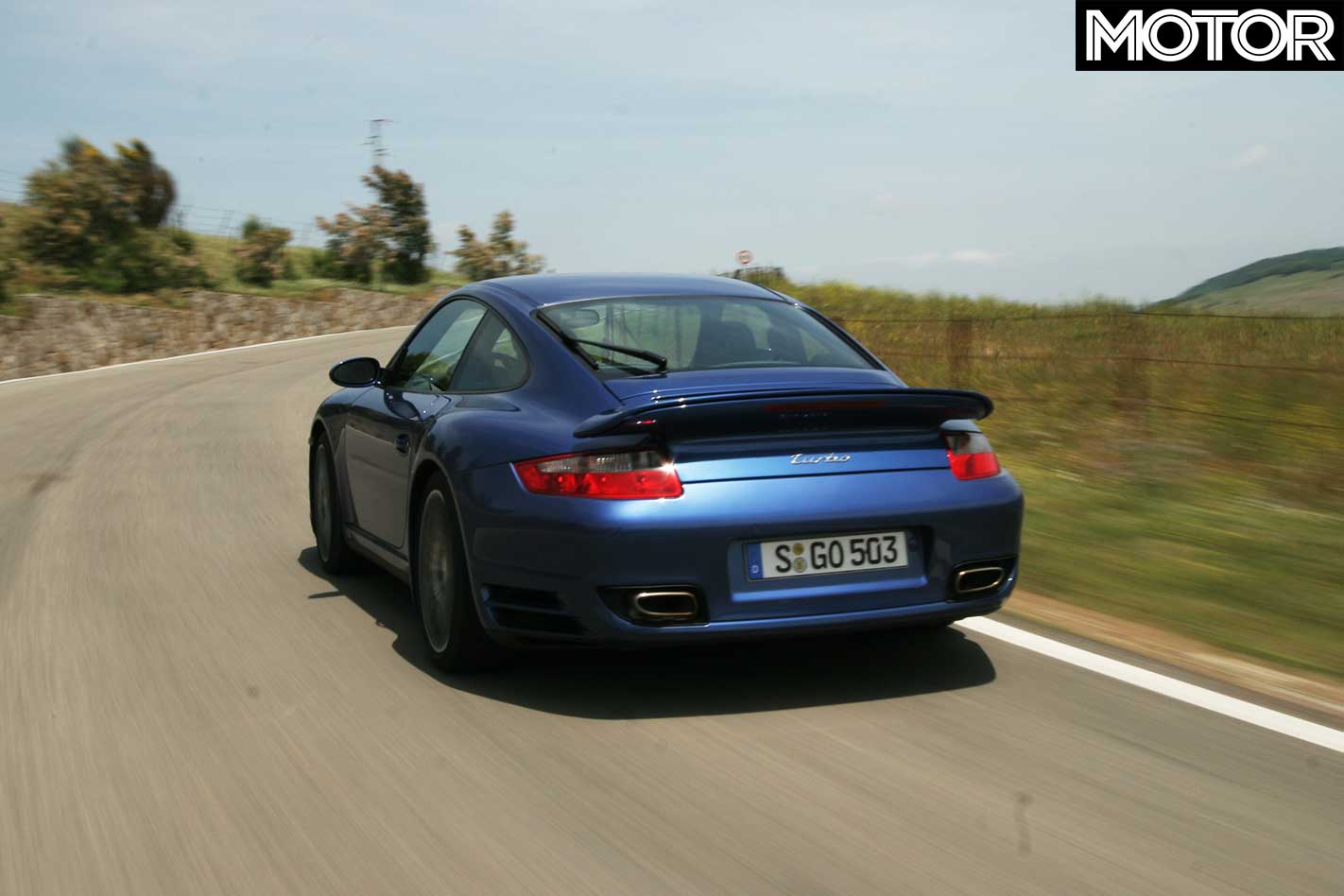
It’s all about forward motion, and the 1585kg 997 Turbo – five kilograms lighter than the 996 Turbo, despite the inclusion of more electronic trickery, more safety and larger wheels – is a grand champion of the art.
The sheer quantity of urge at all times in every gear is at times almost overwhelming, with gaol-baiting speeds only a throttle-push away. You’d like to catch your breath, but you can’t, and it takes a deliberate effort to slow things down before it gets out of hand.
Rocket up to the corner, brake hard, turn in smoothly, lean on the taut chassis and prodigious mechanical grip and warp time out the other end. You can feel the torque feeding to the 305mm wide rears as PTC does its impressive best to keep the fronts in line.
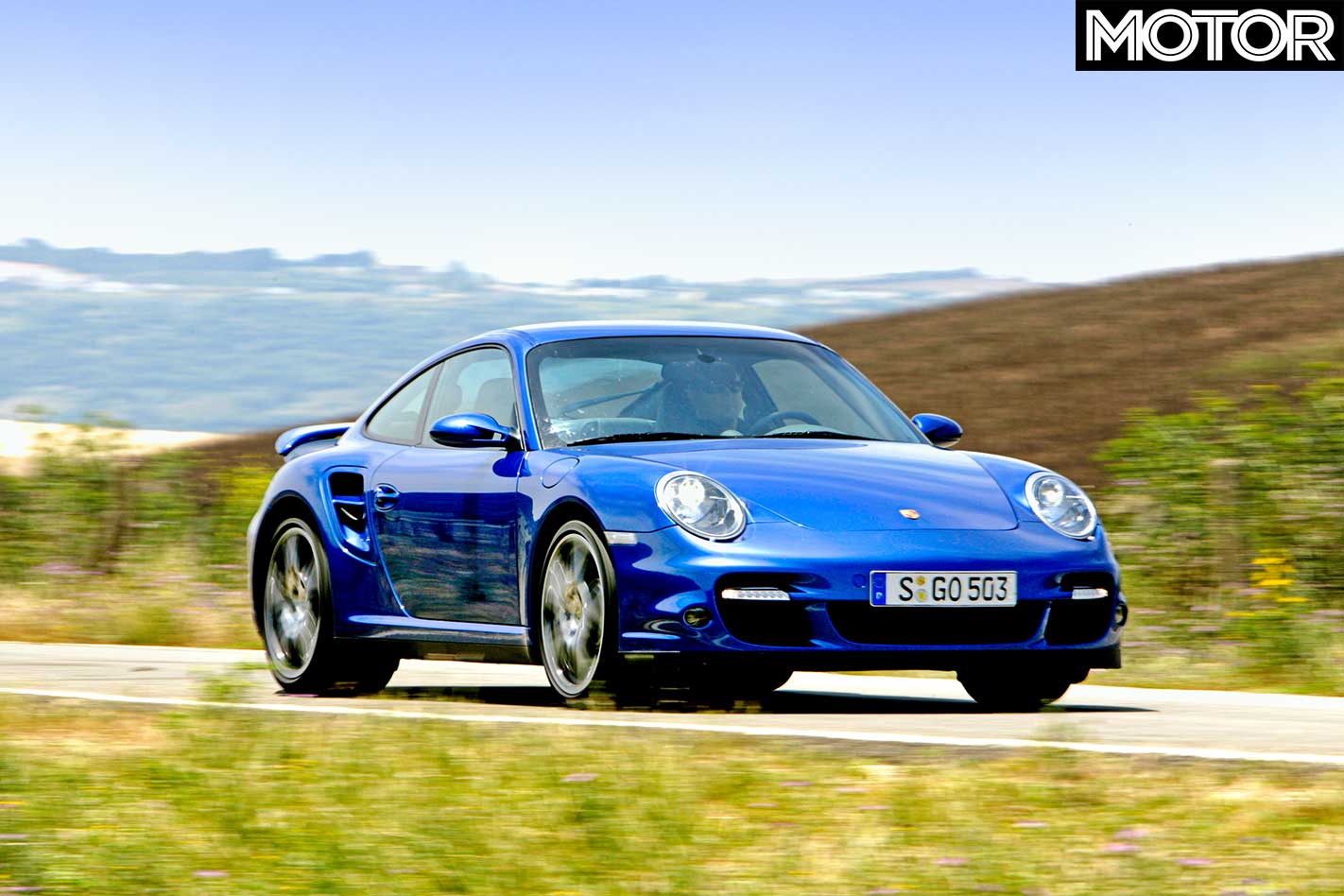
There is, surprisingly perhaps, noticeable turbo lag under about 3000rpm, but it’s not hard to keep the boxer in the right powerband. Almost criminal not to, really. And the Turbo backs up the talk with a 7:49 lap of the Nürburgring in the hands of Walter Röhrl.
The unmodified C4-based bodyshell is impressively robust, especially when you take the car’s light kerb weight into account, something achieved partly through the use of very clever aluminium-framed doors that eliminate all but five components in their construction. There’s also an aluminium bonnet and bootlid.
The chassis is minutely adjustable via wheel or footwell work, though as with all 911s it’s best to keep in mind where the engine actually is, as good a job as the chassis tune does to make you forget about it.

Front-wheel travel occasionally feels inadequate as the wheels patter across a pockmarked piece of tarmac, and it’s relatively easy to experience understeer in the first part of a corner, especially if you’re too eager to take another hit of that intoxicating avalanche of torque.
The steering takes a little time to figure out, too. Relaxing your grip on the medium-thickness wheel rim and letting it whisper to you through your fingertips is the key. It doesn’t chatter excitedly at you like a Carrera, but the slightly calmer, more subtle messages are just as clear and concise.
Mid-corner grip is bloody impressive, the bespoke Michelin Sports a willing accomplice. A long fly-by-wire throttle throw and stupendous (if noisy) PCCD brakes get on well together, too, though the slightly wooden clutch feel is an anomaly.
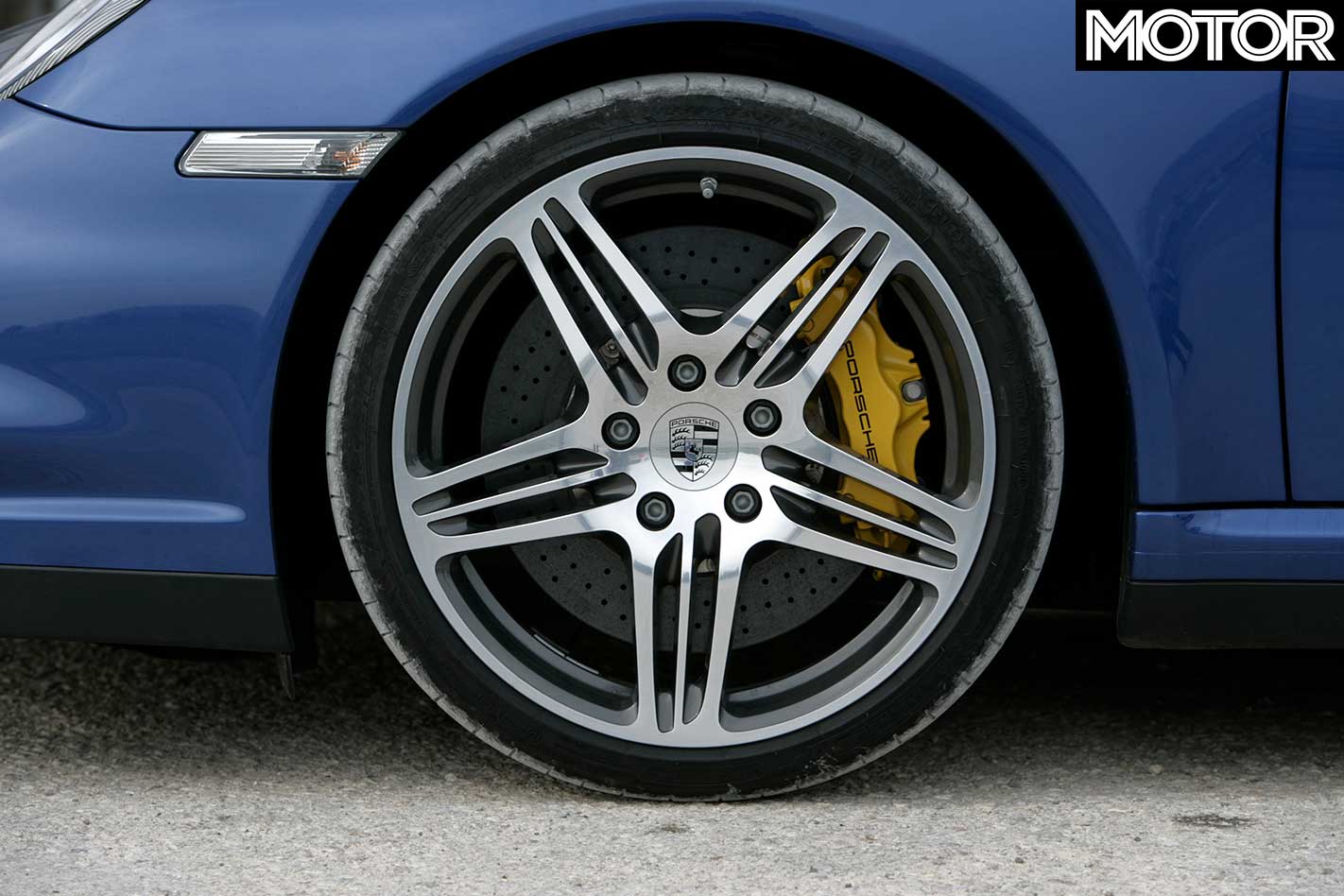
While design is similar, the Turbo’s interior is quite different to the standard 997. The driving position has been set lower thanks to new hardback seats, there’s a Turbo-only gear lever, the pedals have been moved further forward in the footwell and a bar graph boost gauge-display built into the centre dial. Its firm ride doesn’t detract from this car’s cruising capabilities, though as with all 911s, it’s a strictly adults-only experience.
The Turbo is a deeply, richly, incredibly accomplished engineering wet dream. For outright cross-country pace, there’s little that can keep it in sight. Like the 911 GT3…
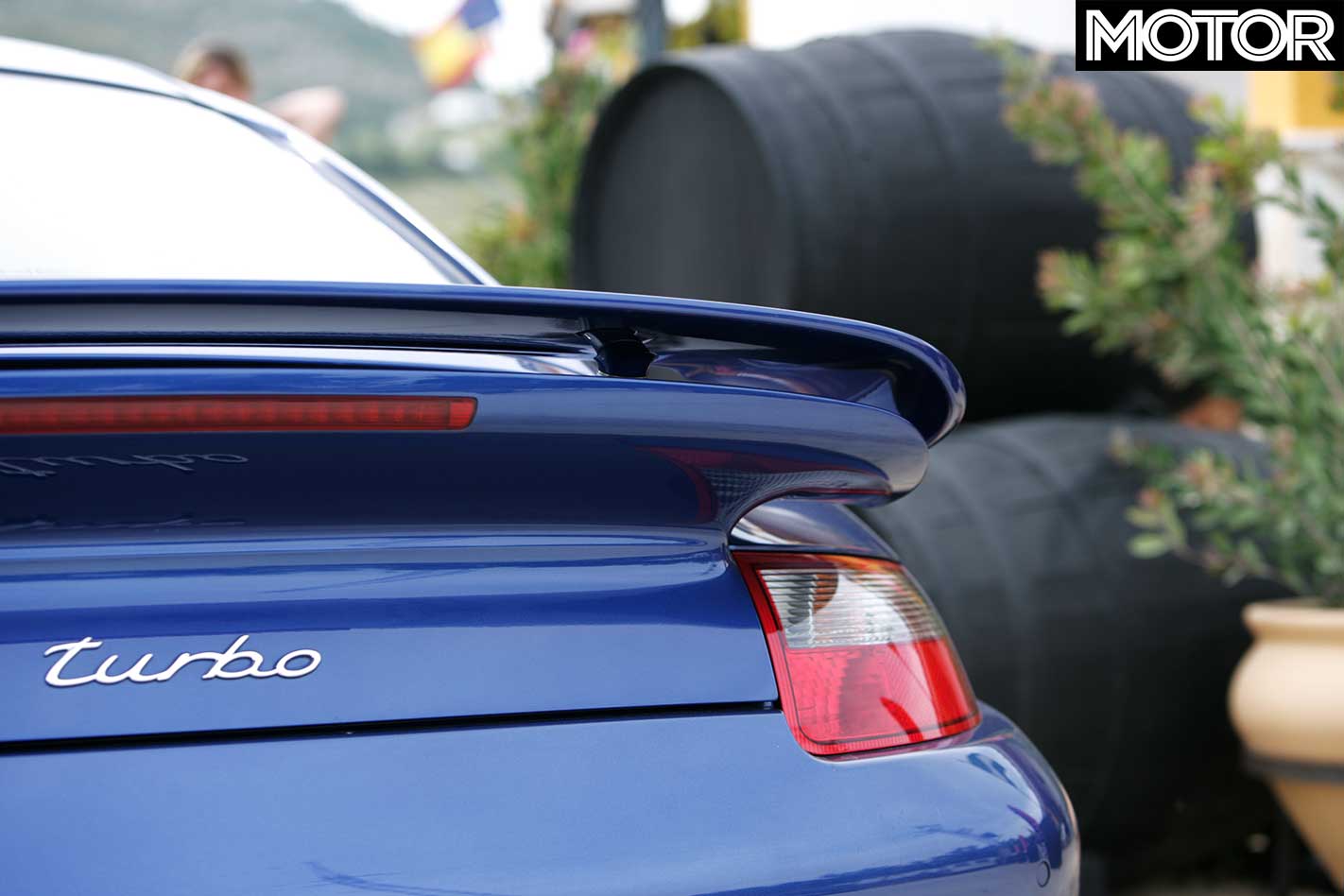
FAST FACTS 2006 Porsche 911 Turbo
BODY: 2-door coupe DRIVE: all-wheel ENGINE: 3600cc DOHC 24-valve, intercooled and twin turbocharged flat-six BORE/STROKE: 100.0mm x 76.4mm POWER: 353kW @ 6000rpm TORQUE: 620Nm @ 1950-5000rpm WEIGHT: 1585kg POWER-TO-WEIGHT: 223kW/tonne TRANSMISSION: six-speed manual SUSPENSION: MacPherson struts, coil springs, anti-roll bar (f); multi-link, coil springs, anti-roll bar (r) BRAKES: 350mm ventilated & drilled discs, six-piston calipers (f); 350mm ventilated & drilled discs, four-piston calipers (r) WHEELS: 19 x 8.5-inch (f); 19 x 11.0-inch (r), alloy TYRES: Michelin Pilot Sport; 235/35 ZR19 (f); 305/30 ZR19 (r) PRICE: $327,000
Want more Porsche?
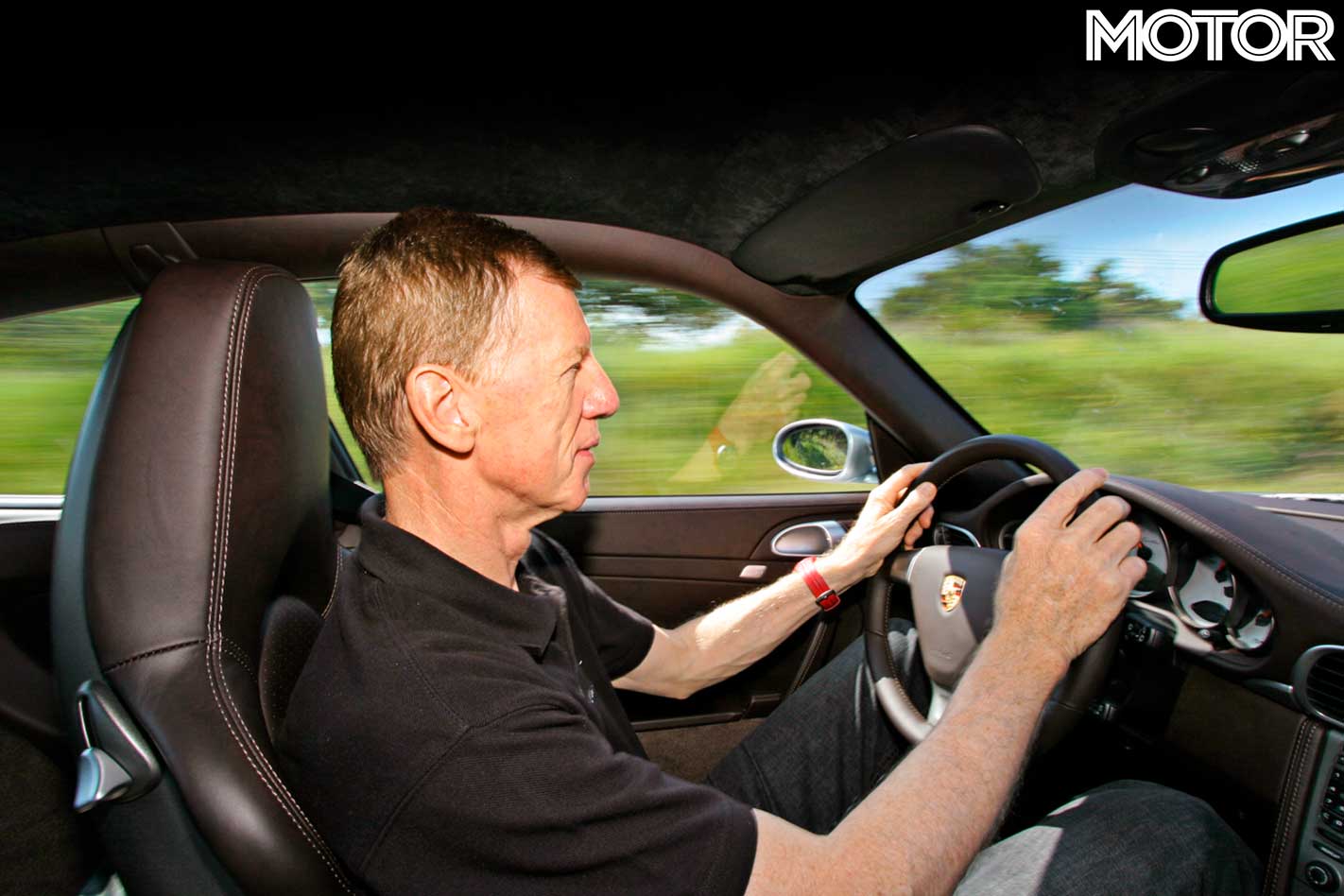
Up for a challenge? Like your Turbo a bit tougher? There’s a few options to be hand on the spec sheet, but the one that caught our eye was a mechanical diff locker – available only with the manual gearbox, of course.
This hairy-chested mod gives 22 percent wheel lock under load and 27 percent off the noise, and the PSM’s auto brake diff will also intervene just that little bit later. You can also spec your Turbo with Sports tyres, a (value) cost option and, of course, you’ll pay around $25,000 to tick the PCCB (carbon brakes) box, too.
Your track-day Turbo is ready, sir.
Mr Porsche Man
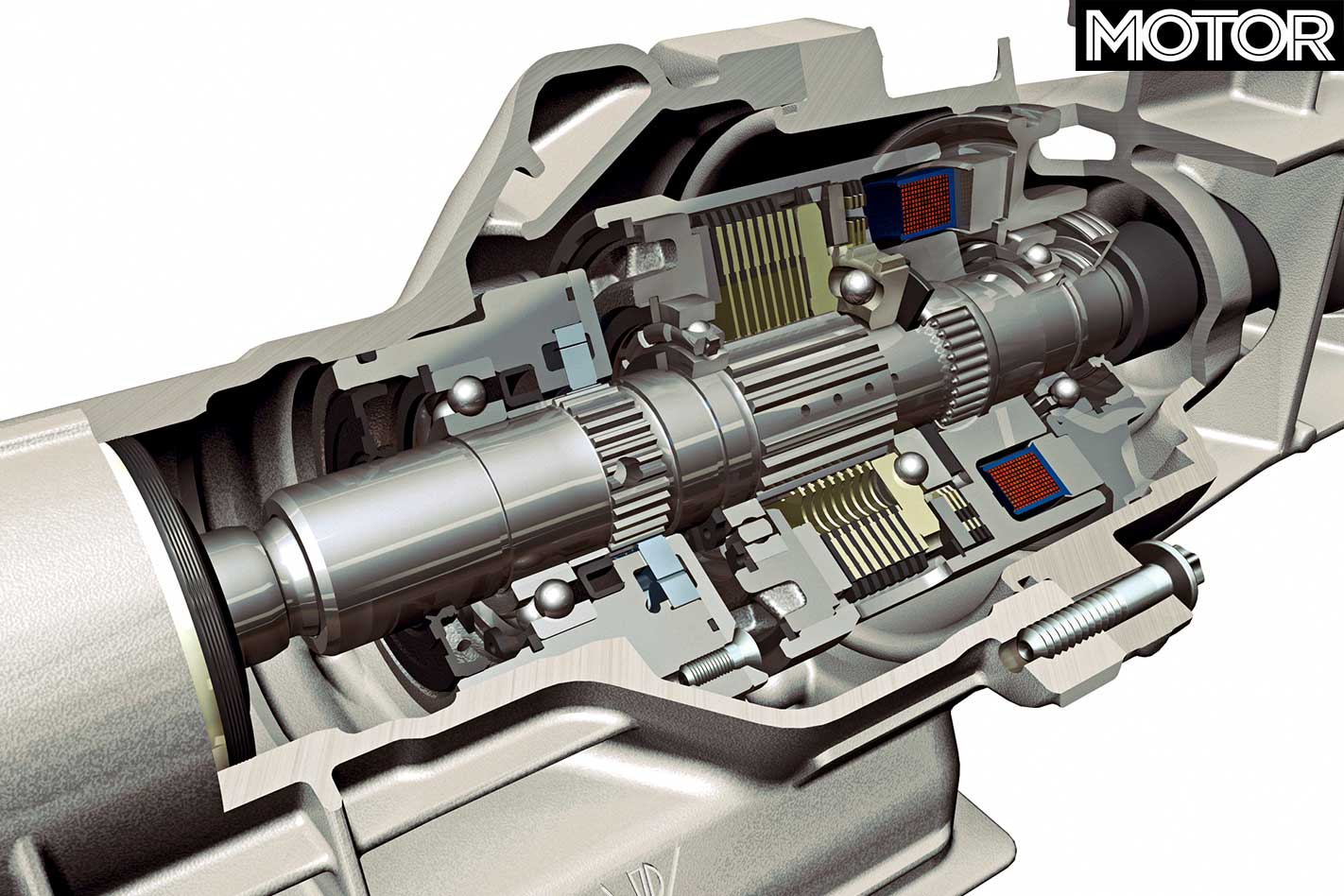
“I have done this drive over 4400 times in the last few weeks,” sings out Porsche’s own Buzz Aldrin, former factory rally ace and current lead tester for Porsche, Walter Röhrl, “and I cannot tire of this car. It is so easy to drive fast.”
No duh, buckwheat, I think grimly, surreptitiously cinching my lap/sash belt a little tighter as the 59-year-old ace simply rockets over the top of a long blind right crest at about 190km/h, the insides ripping crumbling tarmac from the edge of this short, closed run with such ferocity that it’s pockmarking the 997 Turbo’s lower sill plastics.
We’re on a hot lap of a southern Spanish backroad, and Röhrl has taken more than 400 journos and hangers-on for a run along this narrow strip of rutted blacktop. Touching speeds in excess of 220km/h, it’s a faith-affirming blast in the depth of Porsche’s talents that this car can put up with this level of treatment for three weeks straight…

